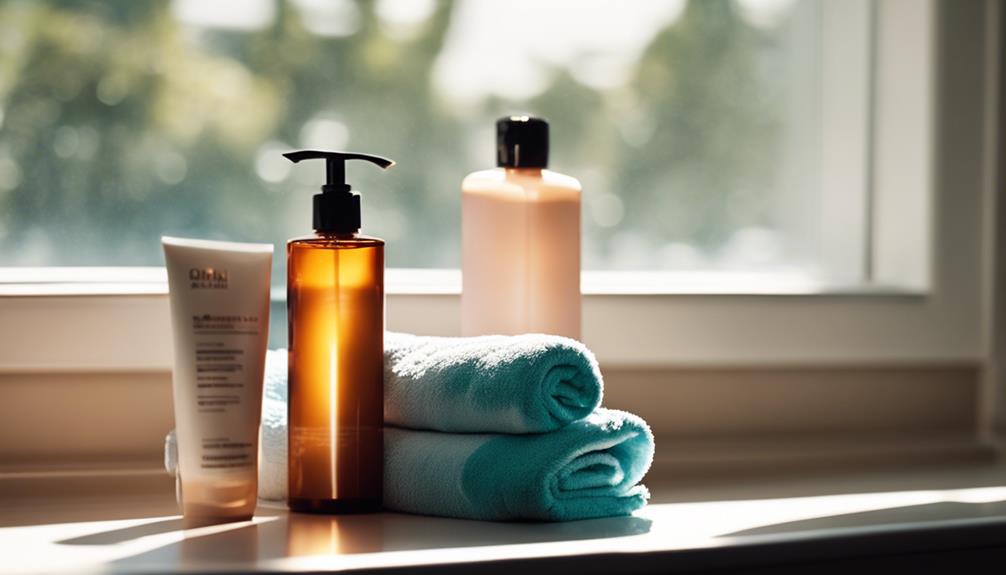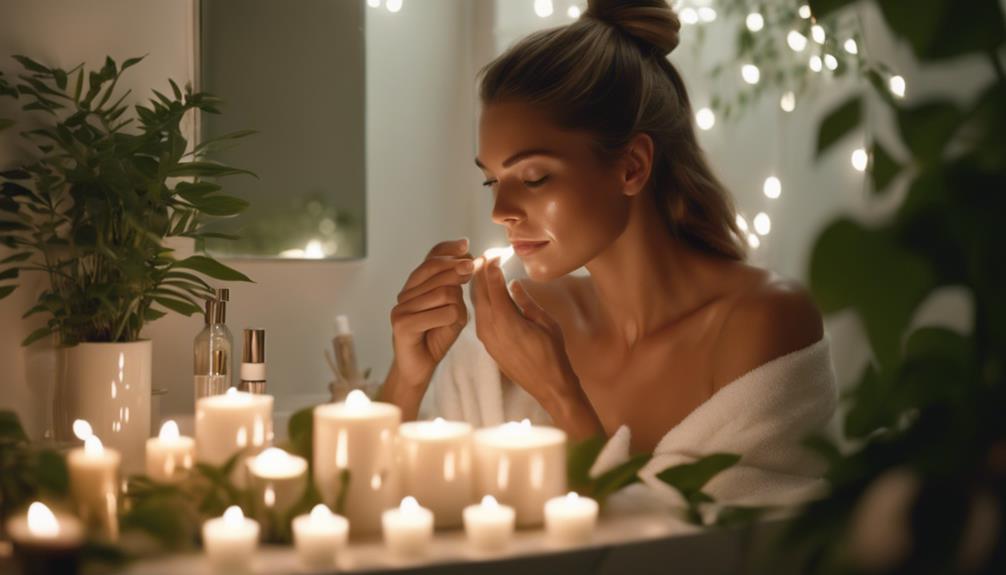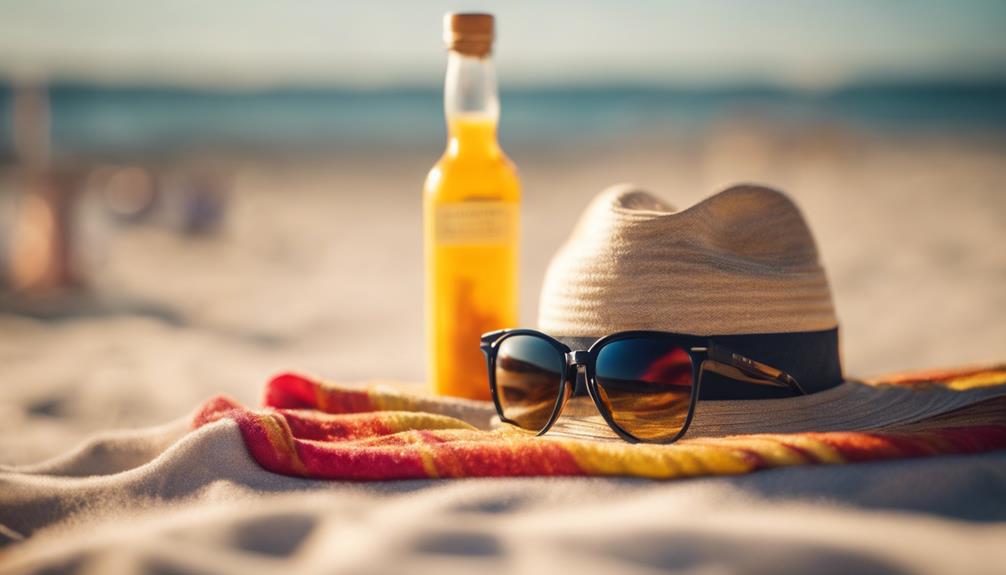Getting ready for the tanning bed? You've gotta assess your skin type first! Make sure to exfoliate and shave at least 24 hours in advance, so your skin's prepped and ready to glow. Don't forget to hydrate with a non-oil based moisturizer! Choosing the right bronzer is key too; matte for oily skin and shimmering for dry. Safety first—wear protective goggles and stick to recommended tanning times. And hey, don't forget about good tanning etiquette; clean the bed and keep chats to a whisper. Stick around, though—you'll find even more tips to keep that tan looking fabulous!
Key Takeaways
- Evaluate your skin type to determine the best tanning approach and avoid potential burns.
- Exfoliate and shave at least 24 hours before your session for smooth skin.
- Remove all makeup and jewelry before tanning to allow skin to breathe properly.
- Apply a non-oil-based moisturizer for hydration to enhance tanning results.
Assessing Your Skin Type
To effectively prepare for tanning, start by evaluating your skin type, as it plays an essential role in determining how well you'll tan and whether you're at risk for burning.
If you have fair skin, you might resemble a lobster after just a few minutes in the sun—ouch! On the other hand, if your skin has a light brown or caramel hue, you're likely on your way to achieving that sun-kissed glow.
Don't forget to take into account your hair and eye color, too; lighter features often mean more challenges in tanning.
It's a great idea to chat with tanning experts, who can help you create a personalized routine.
Pre-Tanning Skin Care
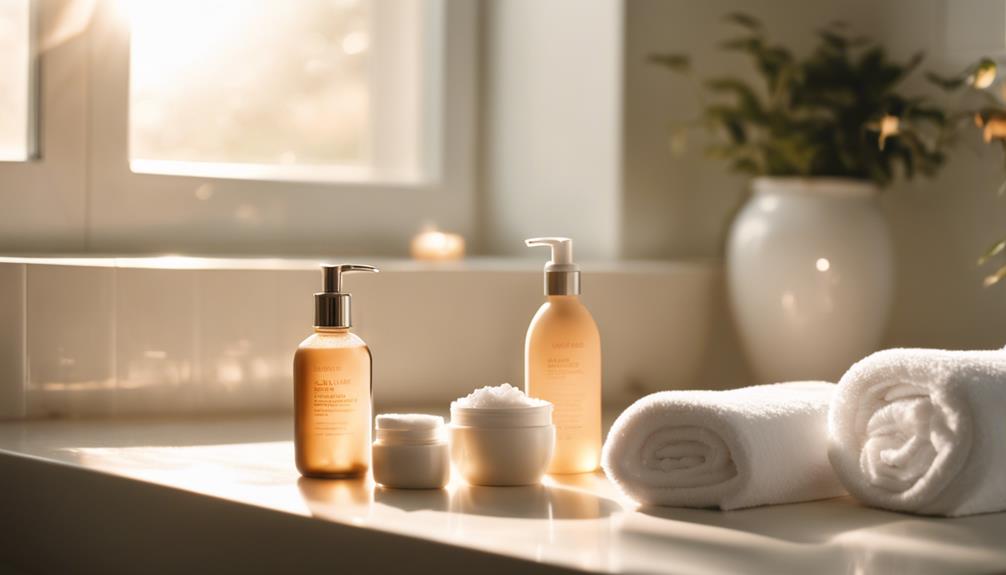
Evaluating your skin type sets the stage for the important pre-tanning skin care steps that follow.
First, make sure to remove all makeup and jewelry to let your skin breathe—just like letting a cake cool before frosting!
Next, exfoliate and shave at least 24 hours before your tanning session; this helps create a smooth canvas for that gorgeous glow.
Don't forget to apply a non-oil based moisturizer to keep your skin hydrated, as dry skin can lead to patchy tanning.
Be sure to check any medications you're taking, as some can make your skin sensitive to UV rays.
Selecting the Right Bronzer

Choosing the right bronzer can make all the difference in achieving a natural-looking tan that complements your skin tone. You want a bronzer that fits you perfectly, so think about your skin type.
If you have oily skin, go for a non-oil-based matte bronzer that won't add shine. On the other hand, if your skin's on the drier side, a shimmering bronzer can give you that extra glow.
Test a few shades to see which one makes you look like a sun-kissed superstar. Remember, buildable bronzers are your best friend; you can layer them to get the intensity just right.
Safety Guidelines for Tanning
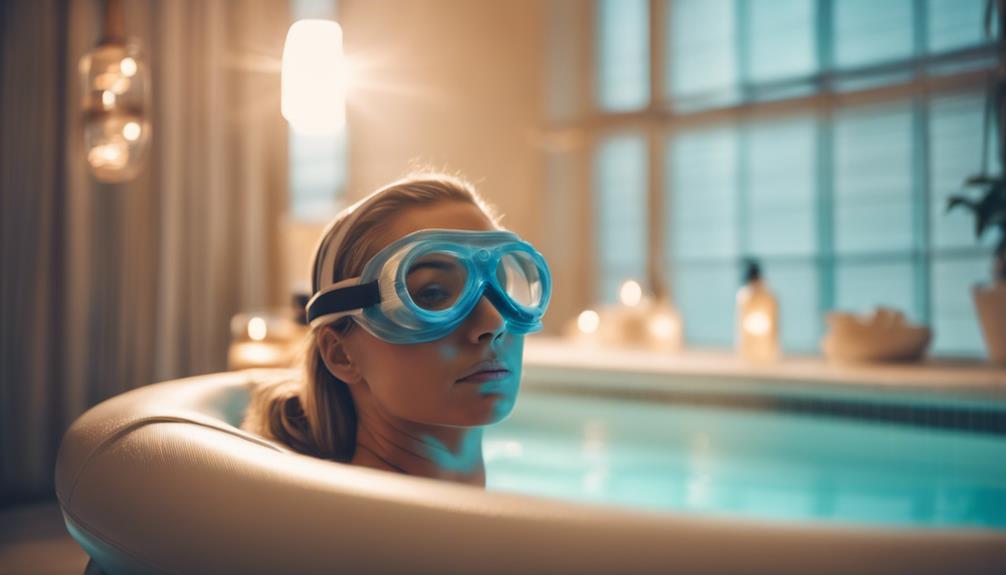
Selecting the right bronzer is only part of the tanning process; following safety guidelines is crucial to protect your skin and guarantee a healthy glow. You want that golden tan, not a lobster look, right?
Here are three important safety tips to keep in mind:
- Consult with professionals: Talk to salon experts about your skin type and recommended tanning times, so you don't overdo it.
- Wear protective goggles: Always use goggles with 100% UV protection to keep your eyes safe from those harsh rays.
- Limit your sessions: Don't go overboard; stick to recommended session limits to avoid skin damage and guarantee you get that lovely tan safely.
Stay smart, and enjoy your tanning experience!
Tanning Bed Etiquette

When using tanning beds, it's essential to follow proper etiquette to guarantee a respectful and enjoyable experience for everyone involved.
First, always arrive on time for your appointment; nobody likes waiting! Next, if you're running late, give the salon a call to let them know.
When it's your turn, make sure to clean the bed before and after use—nobody wants to lay on someone else's sunscreen residue. Also, keep conversations low; the tanning salon isn't a party!
Remember to respect the time limits; don't hog the bed, as others are waiting to get their glow on too.
Alternatives to Tanning Beds
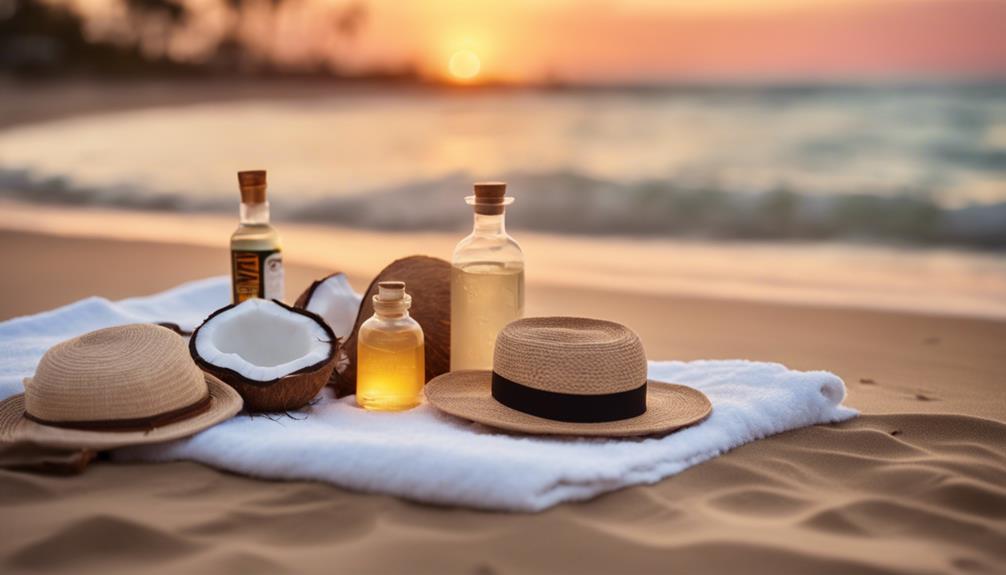
Exploring sunless tanning options can provide you with a radiant glow without the risks associated with UV exposure. Thankfully, you don't have to rely on tanning beds!
Here are some fun alternatives you can try:
- Self-Tanning Lotions: These lotions let you control the shade, so you can build your tan gradually—no more orange mishaps!
- Spray Tans: Quick and effective, a spray tan gives you an instant glow. Just remember to wear loose clothing afterward, or you might create a fashion statement!
- Bronzing Powders: Perfect for a temporary boost, bronzing powders can easily be brushed on for that sun-kissed look.
Post-Tanning Skin Maintenance
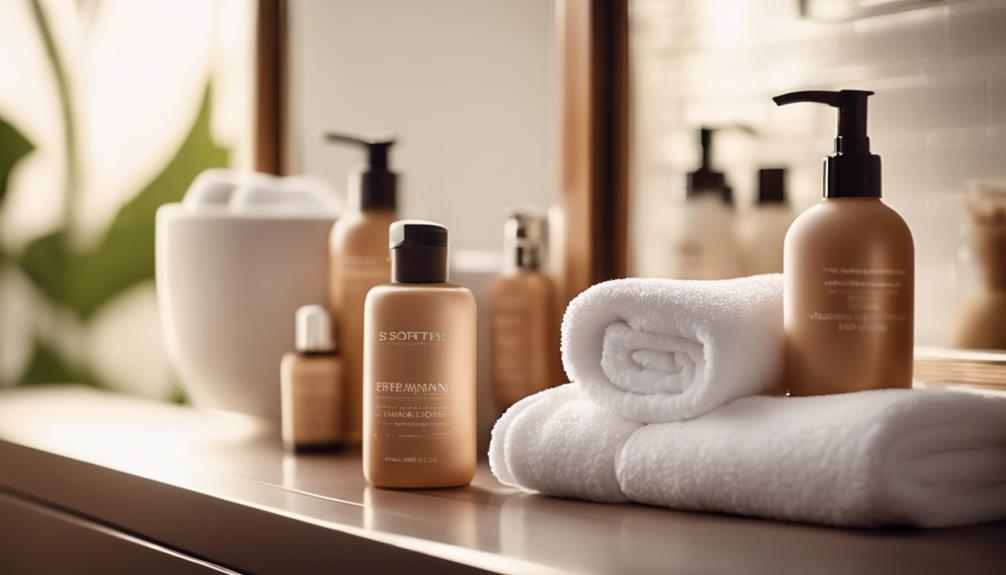
Proper post-tanning skin maintenance is essential to extend the life of your tan and keep your skin healthy. This includes keeping your skin well-moisturized to prevent dryness and flaking, which can cause your tan to fade prematurely. Incorporating hydrating lotions or aloe vera-based products can help soothe and revitalize skin after tanning, ensuring it remains soft and vibrant. Additionally, drinking plenty of water and avoiding harsh exfoliation will further support your skin’s health and prolong your sun-kissed glow.
First, avoid hot showers and heavy scrubbing for at least 24 hours. Your tan needs time to set, so treat your skin gently!
After that, hydrate like you've just run a marathon—apply a moisturizing lotion daily to keep your skin supple and glowing. Look for products with aloe vera or vitamin E; they're like a spa day for your skin!
And remember, stay away from harsh exfoliants for a week to avoid fading your beautiful glow.
Frequently Asked Questions
How Often Should I Tan for Best Results?
You should tan about once or twice a week for ideal results. Monitor your skin's response, and adjust frequency accordingly to avoid overexposure. Always prioritize safety to achieve a beautiful, even tan without damaging your skin.
What Should I Wear During a Tanning Session?
Did you know about 80% of tanning bed users wear minimal clothing? During your session, opt for a swimsuit or dedicated tanning attire to guarantee even coverage while protecting sensitive areas from excessive UV exposure.
Can I Tan if I Have a Sunburn?
You shouldn't tan if you have a sunburn. It can worsen your skin damage and increase healing time. Focus on healing first, then return to tanning once your skin is back to normal.
Is It Safe to Tan During Pregnancy?
While you might dream of a golden glow, it's best to tread carefully during pregnancy. Your skin's sensitivity increases, so consult your doctor before considering any tanning methods for your radiant hopes.
How Do I Know When to Stop Tanning?
You'll know to stop tanning when your skin shows signs of redness or discomfort. Monitor your sessions closely, and don't exceed recommended exposure times to avoid burns and long-term skin damage. Listen to your body.
Conclusion
Now that you've got the scoop on tanning bed prep, you're ready to shine!
Did you know that about 30 million people in the U.S. use tanning beds each year? That's a lot of sun-kissed skin!
Just remember, taking care of your skin is key to achieving that gorgeous glow while keeping it healthy.
So, grab your bronzer, follow those safety tips, and step into the tanning bed with confidence.
You're on your way to looking fabulous!
